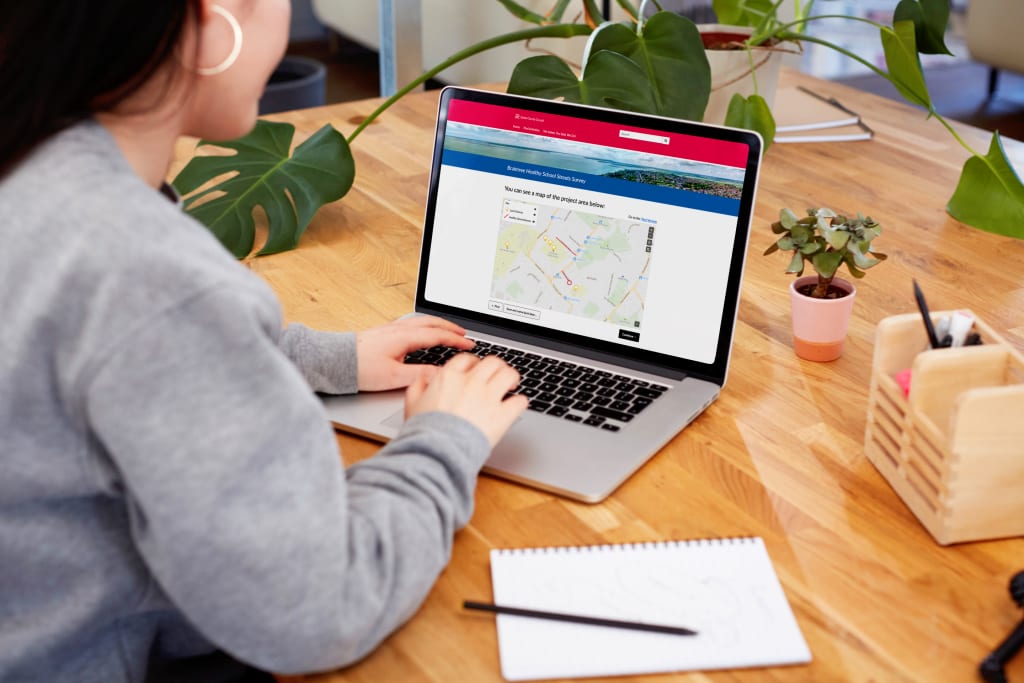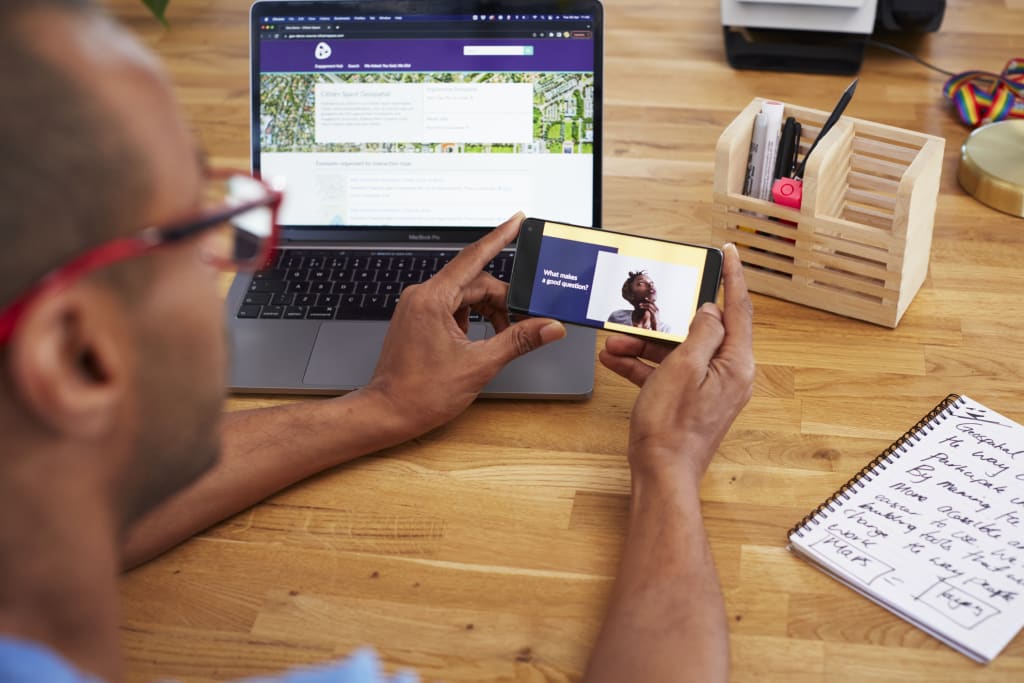
Community engagement is a core function and responsibility of any democratically accountable organisation. It requires incorporating community feedback in government decision making, rather than relying on the traditional top-down approach.
This can encompass a wide range of different methods, including informal participatory exercises, questionnaires, surveys and feedback. The intent of community engagement strategies is to embrace public opinion and allow local knowledge to take the front seat in the public decision-making process.
For a real, nuanced understanding of local wants and needs, regular and effective community engagement is the key.
Step One: Set Your Objectives

Step one of a consultation process or community engagement initiative is essentially project management. You need to get everything in place so you have a stable plan ready to execute, with touchpoints and measurable outcomes established.
Identify the purpose of the community engagement strategy
Firstly, figure out exactly why you’re engaging with the local community. Is it to gather feedback on a new policy, understand evolving local needs, to involve residents in an initiative such as participatory budgeting or to improve local services, for example?
This gives you a jumping off point to figure out how to communicate your engagement strategy effectively to local citizens.
Step Two: Understand Your Community

Different initiatives target different members of the community. You might want to focus on a certain borough, or demographic, for example, requiring an understanding of the structure of the community you’re targeting.
Don’t forget the market research stage, that means studying demographics, interests and concerns of stakeholders and citizens to gain insight into what needs the community has.
This can be done through simple Q&A sessions, small talk forums, or conducting focus groups, for example.
By the end of step two you should have a good understanding of the relevant issues in the community and have begun to develop that important relationship and rapport. It allows you to consider accessibility options, and the cultural, social and economic dynamics of the community.
By truly getting to know your community, you can create initiatives that really connect with people and encourage genuine participation and teamwork.
Step Three: Set Up the Consultation Process

Design a local community engagement strategy that prompts locals to want to take part. That fundamentally is one of the most important things – fostering dialogue in a way that makes citizens feel heard and like their input matters. If you can achieve this, you’ll have a far more successful public consultation.
Decide how you’ll advertise it for maximum reach and, importantly, how you’ll make sure the consultation is accessible for all.
Step Four: Set Project Parameters

Identify what parameters will help you achieve the purpose of your local community engagement initiative. This includes allocating budget, establishing resource allocation and ensuring everyone understands their role.
Establish specific, measurable goals. This could mean aims like reaching a certain number of people, collecting a particular type of feedback (e.g input on geospatial mapping), or achieving a minimum number of respondents.
Don’t forget to put these target metrics in steps along the engagement journey to ensure everything is kept on track.
Step Five: Create Accessible Content

A key issue that comes up in a lot of consultation planning is how to reach everyone, fairly. Not everyone is literate, and not everyone owns a computer. It’s the job of the stakeholders to provide the consultation information in plain English and accessible formats.
If we are to close the digital divide, the way to do so starts with establishing offline and online processes, providing multiple languages and accommodations, and offering different forms of content to make it accessible for all.
Prioritising accessibility shows you care about your community, genuinely want input from all who are willing to give it, which overall makes the engagement more effective.
Step Six: Set Up Your Community Engagement Activities

Firstly, decide the scope of your engagement activities. You’ve already chosen what demographics to target and have a solid plan, so linking this up with a mixture of offline and online engagement activities that encourage community members to interact is paramount.
Online activities
Using a citizen engagement platform like Citizen Space to run your consultation ensures you are providing everyone with all the necessary information in a fully accessible way. People can quickly answer questions or raise concerns from anywhere, anytime during the consultation process.
Another effective way to enhance your community engagement strategy is through the use of interactive online tools like Citizen Space Geospatial. This can help by providing visualisations, so citizens can see the real impact of changes on the physical world around them. By asking them to move pins on the map or plot out prospective changes you are increasing engagement and fostering an understanding between citizens and stakeholders.
Another way of educating citizens is by asking them to “spend” an allotted budget using deliberative prioritisation tools like Simulator so they can see how plans shift depending on funding.
Offline activities
Alongside online activities, citizens should get a chance to have their concerns addressed and opinions heard face-to-face. This could be achieved by setting up town hall meetings or focus groups between citizens and stakeholders.
These meetings provide a platform for open dialogue, allowing participants to voice their opinions, ask questions, and discuss potential solutions in a collaborative setting. Other local engagement initiatives like street teams and collaboration with other groups are also effective in encouraging conversation, and ensuring everyone can participate in the discussion.
Step 7: Create Your Support & Moderation Strategy

Basically, how do you make sure all these engagement activities are run fairly and inclusively? By choosing moderators to monitor the entire process.
Creating an effective community engagement strategy means creating an environment that’s respectful of the process; from both sides. Skilled moderators can engage with both the community and stakeholders to make sure everything is running smoothly.
These individuals should be trained to manage conversations, address conflicts, and encourage inclusive participation, ensuring that all voices are heard and respected. To do this, clear guidelines should be established on accepted behaviour, how to handle any potential conflicts, and the process for raising and addressing concerns.
Part of this is planning for any other hiccups in the engagement activity cycle. For example, having a support team to help those who are less computer literate, to ensure they’re able to take part in online activities.
The best community engagement initiatives are ones that are respectful, inclusive, and accessible to all – from both the stakeholder and citizen perspective.
Step 8: Plan Your Outreach

You’ve got all the makings of a successful community engagement strategy… but that’s no good if no one knows about the events you’re running!
A key part of the plan needs to be outreach and raising awareness. This means creating a marketing plan that effectively targets citizens you want to take part in the consultation.
Start by identifying which channels you want to use, this could be across social media, email campaigns, media outlets like local newspapers or community bulletin boards, and reaching out to local organisations and community leaders.
Develop a content strategy
A content calendar of the communications you want to send is essential to ensure everyone receives the information, across every platform possible.
To make it more accessible and inclusive, try to plan out a series of different content types. By providing options like video, polls, articles, visuals, and interactive sessions or activities, you’re catering to the whole spectrum of learning styles, making people more likely to engage.
Keeping track
Don’t forget to monitor your metrics and see if responses are aligning with your original KPIs. By continually checking feedback and response metrics, you can adjust your community engagement strategy in real-time to improve impact and citizen participation.
Step Nine: Launch!

It’s time!
This is the moment where all the steps above come together for a successful community engagement initiative launch.
Make a clear announcement across all your chosen communication channels, highlighting the purpose of the initiative, how to participate, and its benefits and potential outcomes.
Actively monitor the launch, seeing who is responding and be ready to address any initial questions about the process that could arise.
Step Ten: Closing the Feedback Loop

This last step is extremely important, yet also runs the risk of being forgotten. You’ve got all those wonderful responses and a solid plan of how to move forward thanks to them, but you’ve forgotten to tell participants the outcome!
You need to report back on the findings, their impact, and how they changed the original plans; which is a process called ‘closing the feedback loop’. By being transparent, stakeholders and government are held accountable, increasing trust and motivating participants to engage more in the future.
Citizen Space offers a tool “We Asked. You Said. We Did.” to facilitate this part of the community engagement strategy process and share results openly.